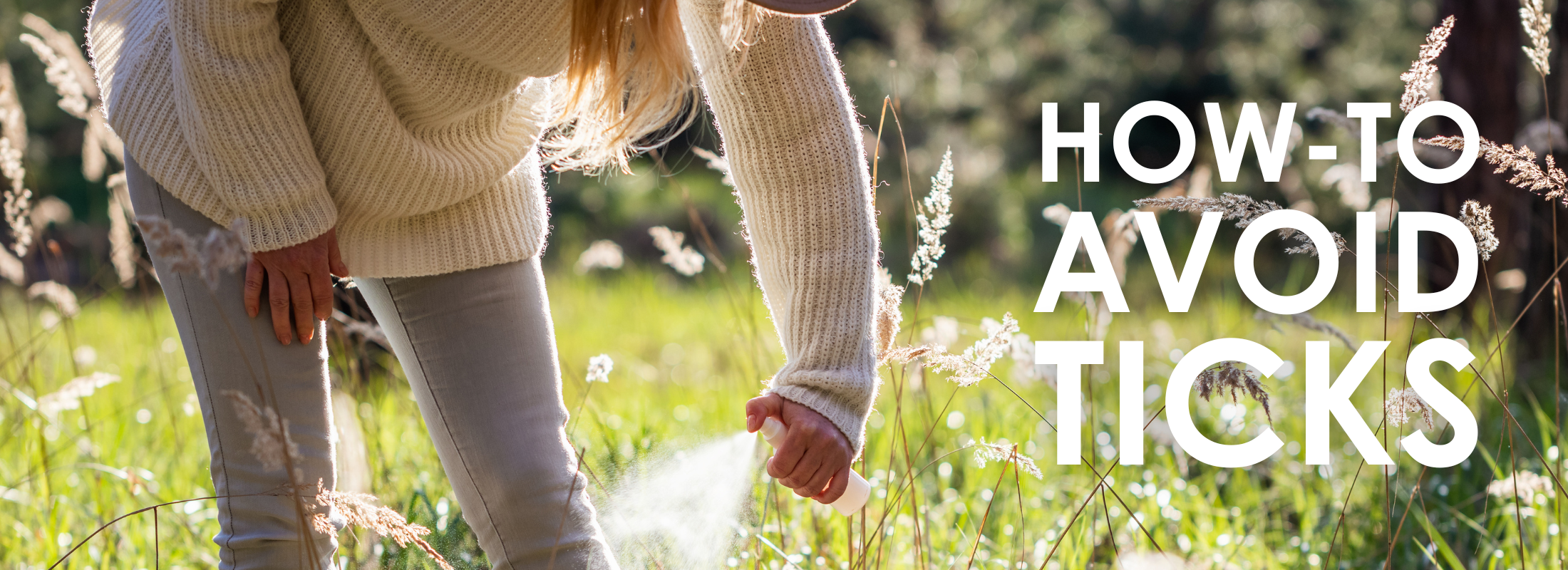
Don’t Get Bit By a Tick: Tips to Avoid Ticks & How to Tick Proof Your Backyard
Table of Contents
We all want to avoid ticks. Seeing a tick on your skin, or being bit by a tick, brings the fear of a possible illness called Lyme disease. Additionally, they can also carry lesser-known diseases such as babesiosis, ehrlichiosis, and anaplasmosis. The best defense is avoidance when it comes to tick bite prevention. We want you to be safe this season, so this article has some helpful tips on how to avoid tick bites as well as advice on how to tick proof your backyard, and what to do if a tick bites you!
The typical season for ticks is April to September. Not every area of the country has the same types of ticks. So be sure to check what ticks to be on the lookout for.
Know Before You Go Outdoors
There are many areas where ticks live outdoors or even in your backyard! Ticks like to live on animals as well as tall grass and brushy or wooded areas. If you are spending time outdoors enjoying activities such as gardening, hunting, and camping, these are the perfect opportunities for a tick to find its way to you. Furthermore, a lot of people find ticks in their yards and gardens as well.
Make sure you wear clothing that covers your skin as best you can, such as long sleeve shirts, long pants tucked into your socks, long socks, in addition to proper footwear, a hat, and gloves if needed.
Treating your clothing with Permethrin is a great way to keep ticks off you. Make sure you follow the directions carefully and apply outside. Other insect repellents, especially those containing DEET are another great way to keep those pesky bugs away from your skin and clothing.
Avoid Ticks and Tick Proof Your Backyard so You Don’t Get Bit By A Tick
Most of the time, tick bites occur in and around people’s houses. You may live in a more wooded area, have a large backyard, or enjoy gardening. Obviously, these are all places you can encounter ticks. For that reason, take some time to tick-proof your backyard as best you can, so you do not get bit by a tick.
Remove any tree branches hanging over playgrounds as well as areas where you hang your laundry.
Rake and remove any brush and leaves in and around your yard.
Keep pests away with bug traps and animal traps.
Stay out of thick wooded areas if you do not need to venture into them.
Keep your grass trimmed often and any long grass removed with a weed trimmer.
Check for Ticks After Being Outdoors
After implementing the tips on how to tick proof your backyard, your second-best line of defense is checking yourself post-outdoor exposure. Be sure to take your clothes off and wash them in hot water and then tumble dry on high heat to remove any possible ticks on them. If you have pets check them thoroughly for ticks with a proper comb.
Your next step would be to shower within two hours of being outdoors. It has proven to reduce your risk of getting Lyme disease and reducing the risk of other tickborne illnesses. Showering may help to wash off unattached ticks and is a great place to perform a tick check on your body.
Thoroughly checking your body is one of the best ways to prevent tick bites. Make sure you check every area of your body, including the following areas where ticks tend to hide:
- Under the arms
- In and around the ears
- Inside belly button
- Back of the knees
- In and around the hair
- Between the legs
- Around the waist
If a tick bites you, visit your local urgent care for the removal and testing of the tick. You can also easily remove ticks at home with a pair of tweezers. Make sure you grab the tick as close to the skin as possible and pull it up and out. Tell your doctor about the tick bite and watch for signs and symptoms of a reaction and tick-borne diseases.
If you are experiencing symptoms of tick-borne diseases, don’t wait; visit your local urgent care center or a PCP for testing and treatment.
© Excel Urgent Care and Affiliates 2023
Sources:

